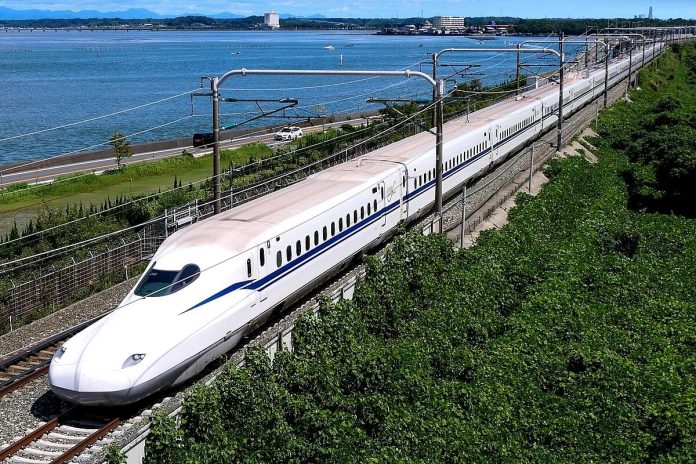In a huge step forward, top officials from the railway ministry and the Japanese government are preparing for a crucial meeting on September 1st. This high-stakes gathering intends to rigorously examine the progress made in the ambitious Mumbai-Ahmedabad Bullet Train project, a symbol of India-Japan modernization and bilateral cooperation.
The Importance of the Meeting
The joint committee, a critical platform that serves as the pinnacle consultative body for driving projects of common significance and mutual advantage, is at the heart of this upcoming event. The upcoming meeting is expected to be the final step in determining the cost of the rolling stock, a decision that will have a significant impact on the project’s future.
Understanding NHSRCL’s Role
The National High-Speed Rail Corporation Limited (NHSRCL), the organization tasked with carrying out this visionary project, has reached a key milestone by awarding all vital civil contracts for the massive 508-kilometer high-speed rail network. However, a significant piece of the puzzle, notably the finalization of the rolling stock cost, remains, emphasizing the importance of the future meeting.
The Development of the Bullet Train Project
Taking a step back to comprehend the direction of this huge project, it’s worth noting that proposals for the procurement of 24 E5 Series Shinkansen train sets were recently solicited. These cutting-edge trains are intended to travel the Mumbai-Ahmedabad line with grace and accuracy, ushering in a new era of connection and efficiency. This transaction is expected to cost an astonishing Rs 11,000 crore.
Decision Makers and Key Players
The upcoming meeting will be presided over by eminent railway minister Ashwini Vaishnaw, who will be accompanied by a Japanese delegation, demonstrating the shared dedication to this transformative initiative. Building on earlier engagements, the meeting is intended to draw on the views of Mori Masafumi, the Japanese Prime Minister’s special adviser, who co-chaired previous discussions.
The Pending Discussion Points
According to the Times of India, the discussions are expected to focus on two critical issues: rolling stock and signaling systems. Given the project’s advanced state of implementation, quick resolutions are critical. The finalization of the train’s cost not only expedites the procurement process, but also sets the ground for the big introduction of the first bullet train in 2027, which is scheduled to grace the Gujarat length of the Ahmedabad-Mumbai line.
Japanese Know-How and Collaboration
The exclusivity offered to Japanese businesses in the procurement of rolling stock is an important aspect of this relationship. This approach is consistent with the Japan International Cooperation Agency’s (JICA) financial regulations, demonstrating a healthy synergy between funding mandates and operational capabilities. Key players in the Japanese rolling stock market, including as Hitachi Rail and Kawasaki Heavy Industries, have all played a role in achieving this tremendous feat.
The Action Countdown
Japanese rolling stock businesses are racing against the clock to submit offers before the strategic deadline of the end of October. Each Shinkansen train set, a technical marvel, is expected to include ten coaches and can carry up to 690 passengers. Notably, these train sets are being rigorously customized to endure the rigors of the Indian climate, with improvements aimed at combating the intense summer heat and the pervasive dust.
Unveiling the Future: Prospects and Plans
The project’s future concept is nothing short of revolutionary. The first train is scheduled to arrive before 2027, operating between the thriving Gujarat towns of Vapi and Sabarmati. This marks the beginning of a new era of fast, efficient, and elegant travel.
Disclosing the Route and Frequency
The Mumbai-Ahmedabad High-Speed Rail Corridor will be home to trains capable of reaching speeds of 320 kilometers per hour, covering an astonishing distance of 508 kilometers via 12 strategically placed stations. This massive network proposes a daily frequency of 35 trains, catering to both peak and off-peak hours. During peak hours, trains will be separated by only 20 minutes, while non-peak times would be separated by a pleasant 30-minute interval.
Time Management and Connectivity
The importance of this corridor is further emphasized by its effective service concept. The limited-stop service, which will only stop in Surat and Vadodara, claims to cover the entire trip in one hour and 58 minutes. The all-stops service extends the journey time to two hours and 57 minutes for those who want a more immersive experience.
The Sabarmati Hub Provides Centralized Control
The Mumbai-Ahmedabad High-Speed Rail Corridor Operational Control Center is at the heart of this gigantic undertaking. This important hub will be strategically positioned in Sabarmati, functioning as the dynamic nerve center controlling the network’s flawless operation.
Creating a New Pathway
As the crucial meeting on September 1st approaches, the impending decisions have the potential to determine the course of this massive enterprise. The partnership of Indian and Japanese expertise has set the path for a revolutionary initiative at the intersection of modernization and progress. The Mumbai-Ahmedabad Bullet Train project has the potential to change the very fabric of connectivity, efficiency, and national pride.


